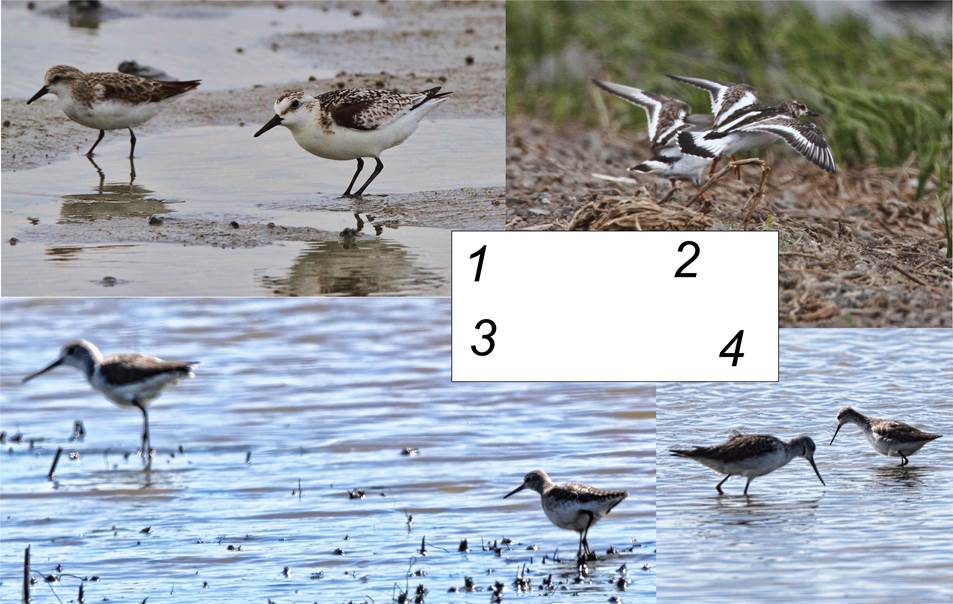The answers to the below, so far as I understand them, are as follows
All were photographed at Werribee last week.
1. A Sanderling (one of 3) with a Red-necked Stint on the tidal flats in front of the hide
2. 2 of 6 Ruddy Turnstones on a levee dividing conservation ponds. These 2 were possibly the most strongly marked, but I cannot speak as to age or exact stage in the plumage cycle
3. A Wood Sandpiper feeding in company of a Greenshank. I only picked the Wood by reason of that constant tail-bobbing. Chequering in wings is also evident.
4. Greenshank, this time with a Marsh Sandpiper (which can look like a smaller version of the Greenshank)
Thanks to all who offered their thoughts. It was quite difficult, I thought. However Mark Clayton and Bob Rusk got them all
I omitted the abundant Sharpies and the Curlew Sandpipers. I met Danny Rogers doing some counting. He pointed out a Pectoral Sandpiper to me, but it disappeared into the veg before I could photograph it. There were also reports of a Terek Sandpiper but I didn’t come across that
From: Geoffrey Dabb [
Sent: Thursday, 24 October 2013 6:42 PM
To:
Subject: [canberrabirds] Uses of Bird Photography, revisited #4
#4 : to sharpen wader ID skills
I am sure there are people whose skills don’t need sharpening, but I am not one of them. The question is – to which species do each of the below belong?


